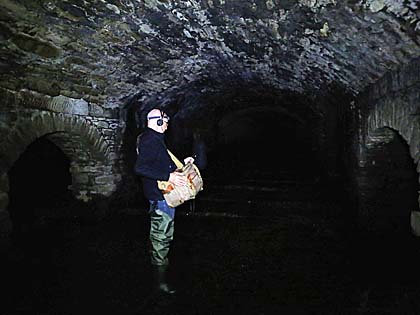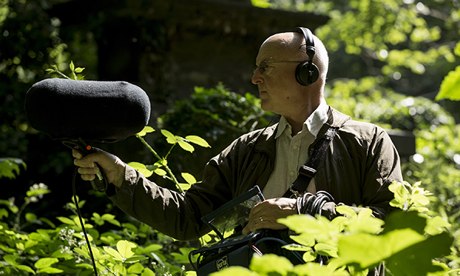This is not the post that I originally intended to write today, but found myself reaching for a my IPad to tweet an image from the title sequence to the new HBO drama True Detective (2013-), written by Nic Pizzolatto and directed by Cary Joji Fukunaga, who directed the superb Sin Nombre (2009).
Before I go into more detail, some back-story would be useful. While studying for a my BA at Falmouth a new small art bookshop opened up for a short period, in one of the back streets well away from the main shopping area. While browsing I came across a stack of magazines and picked up Aperture 162, at first too look at the interview with Sally Mann’s daughter, Jessie and her experiences with growing up as a muse for her mothers work.
As I continued to flick through the pages I came across an image that stopped me dead in my tracks entitled Abandoned Trailer Home by the photography Richard Misrach, taken from his series then titled Cancer Alley.

Moments like this are very rare and the only thing that had this level of impact on my up until this point was the first time I saw Thomas Struth’s work at the New York Metropolitan Museum of Art, and was stuck by the scale and detail they contained. This was the first time I had come across Misrach’s work, and it would help inform my interests and projects from that point on.
Misrach’s images have been a huge influence on me over the years, be it informing the subject matter of my work The Smell of Bitumen,


or psychogeography in his series Desert Cantos.

I was therefore very surprised to watch the opening credits of True Detective and come across Misrach’s Cancer Alley images used a series of double exposure moving stills. For more information on the titles
What immediately struck me was how these images of edgeland spaces were being used as a means to discuss the psychological affects on the characters inhabiting the region. They were depicted as being a physical part of the psyche.
True Detective follows a seam of contemporary television that places the landscape, front and centre of the narrative. The affect of the locale on the characters acts as a catalyst for the story, and in many cases the landscape is a much a cast member as the people it shares top billing with.
The Guardian’s review by Sam Wollaston, Could the real star of True Detective be Louisiana? concludes his review with the following;
So it has movie stars and a movie director (Cary Fukunaga, who did Sin Nombre and Jane Eyre) to give it a big cinematic look. But the star with no credit is the scenery, mostly sliding slowly by beyond the window of an unmarked police (first syllable stress, PO-lice) car. I’ve never been there, but I feel like I have now, Louisiana captured. Flatlands, massive skies, shacks, plenty of weirdness and bible belt lunacy, the ghosts of lost children. Erath “is like somebody’s memory of a town, and the memory’s fading”, says Cohle. Then there’s the sad whistle of a freight train.
We don’t see that train, but it sounds to me like one of those real slow ones that goes on and on, rolling by. You sit and watch though, transfixed, maybe even after it’s gone, because it’s beautiful. Bit like True Detective.
The last time I remember US show’s having a title sequence of this nature was David Simon’s Treme (2010-13), Which over it’s three series has included the work of a number of stills photographers including Deborah Luster and Will Steacy. Photography inhabiting popular culture, and further blurring the line between traditional photo-journalistic publishing.
along with the often-referenced opening to David Chase’s The Sopranos (1999-2007),
both of which immersed the viewer in the sites and sounds of New Orleans and New Jersey’s Meadowlands. A good title sequence should set out the premise of the programme, and all of these examples clearly state that this is a show about a place and time.
While it is still unusual for place to play an intrinsic part in the story for mainstream American television. It is less uncommon in European television and I would argue that that is greatly down to the popularity of Scandi-Noir, including recent programmes such as The Bridge (2011- Denmark)/ The Tunnel (2013- UK), Wallander (2005-13 Sweden,2008-14 UK) , The Killing (2007-12) and The Returned (2012-). However I would argue that the Scandinavian Noir borrows at times from the US western, so the idea of place as character is not new to American screens and have been recently embraced by films borrowing from the Western, such as Winter’s Bone (2010) and Frozen River (2008).
In the UK, independent cinema has also embraced the landscape, particularly in Fish Tank (2009)
and last years criminally overlooked The Selfish Giant (2013).
It is an idea that is far more common in literature, where the author has the space to create mood and embellish a scene through description of the surroundings. In light of the passing of Philip Seymour Hoffman, I have found myself thinking of Truman Capote’s In Cold Blood (1965).
The village of Holcomb stands on the high wheat plains of western Kansas, a lonesome area that other Kansans call “out there.” Some seventy miles east of the Colorado border, the countryside, with its hard blue skies and desert-clear air, has an atmosphere that is rather more Far Western than Middle West. The local accent is barbed with a prairie twang, a ranch-hand nasalness, and the men, many of them, wear narrow frontier trousers, Stetsons, and high-heeled boots with pointed toes. The land is flat, and the views are awesomely extensive; horses, herds of cattle, a white cluster of grain elevators rising as gracefully as Greek temples are visible long before a traveler reaches them.
Holcomb, too, can be seen from great distances. Not that there is much to see—simply an aimless congregation of buildings divided in the center by the main-line tracks of the Santa Fe Railroad, a haphazard hamlet bounded on the south by a brown stretch of the Arkansas (pronounced “Ar-kansas”) River, on the north by a highway, Route 50, and on the east and west by prairie lands and wheat fields. After rain, or when snowfalls thaw, the streets, unnamed, unshaded, unpaved, turn from the thickest dust into the direst mud. At one end of the town stands a stark old stucco structure, the roof of which supports an electric sign—Dance—but the dancing has ceased and the advertisement has been dark for several years. Nearby is another building with an irrelevant sign, this one in flaking gold on a dirty window— HOLCOMB BANK. The bank closed in 1933, and it is one of the town’s two “apartment houses,” the second being a ramshackle mansion known, because a good part of the local school’s faculty lives there, as the Teacherage. But the majority of Holcomb’s homes are one-story frame affairs, with front porches.
It is an opening that perfectly places the reader in a physical location, just like Conrad’s Heart of Darkness (1899);
The sea-reach of the Thames stretched before us like the beginning of an interminable waterway. In the offing the sea and the sky were welded together without a joint, and in the luminous space the tanned sails of the barges drifting up with the tide seemed to stand still in red clusters of canvas sharply peaked, with gleams of varnished sprits. A haze rested on the low shores that ran out to sea in vanishing flatness. The air was dark above Gravesend, and farther back still seemed condensed into a mournful gloom, brooding motionless over the biggest, and the greatest, town on earth.
Perhaps the reader is far more willing to let a story evolve, perhaps it has a lot to do with the average attention span of those viewing mainstream programming. I would say that certainly down to the resurgence of the long form TV drama, audience are starting to embrace the idea of evolving narratives and characterisations, long master shots setting the scene.
The thing I find strangest writing this post is the number of flat flood planed landscapes I have described, perhaps after five years the Norfolk landscape has found it’s way in.











